You are using an out of date browser. It may not display this or other websites correctly.
You should upgrade or use an alternative browser.
You should upgrade or use an alternative browser.
Royal Navy Type 26 Frigate
- Thread starter Thorvic
- Start date
- Joined
- 25 January 2020
- Messages
- 1,279
- Reaction score
- 1,951
The Type 26 frigate is going to come armed with cruise missiles:
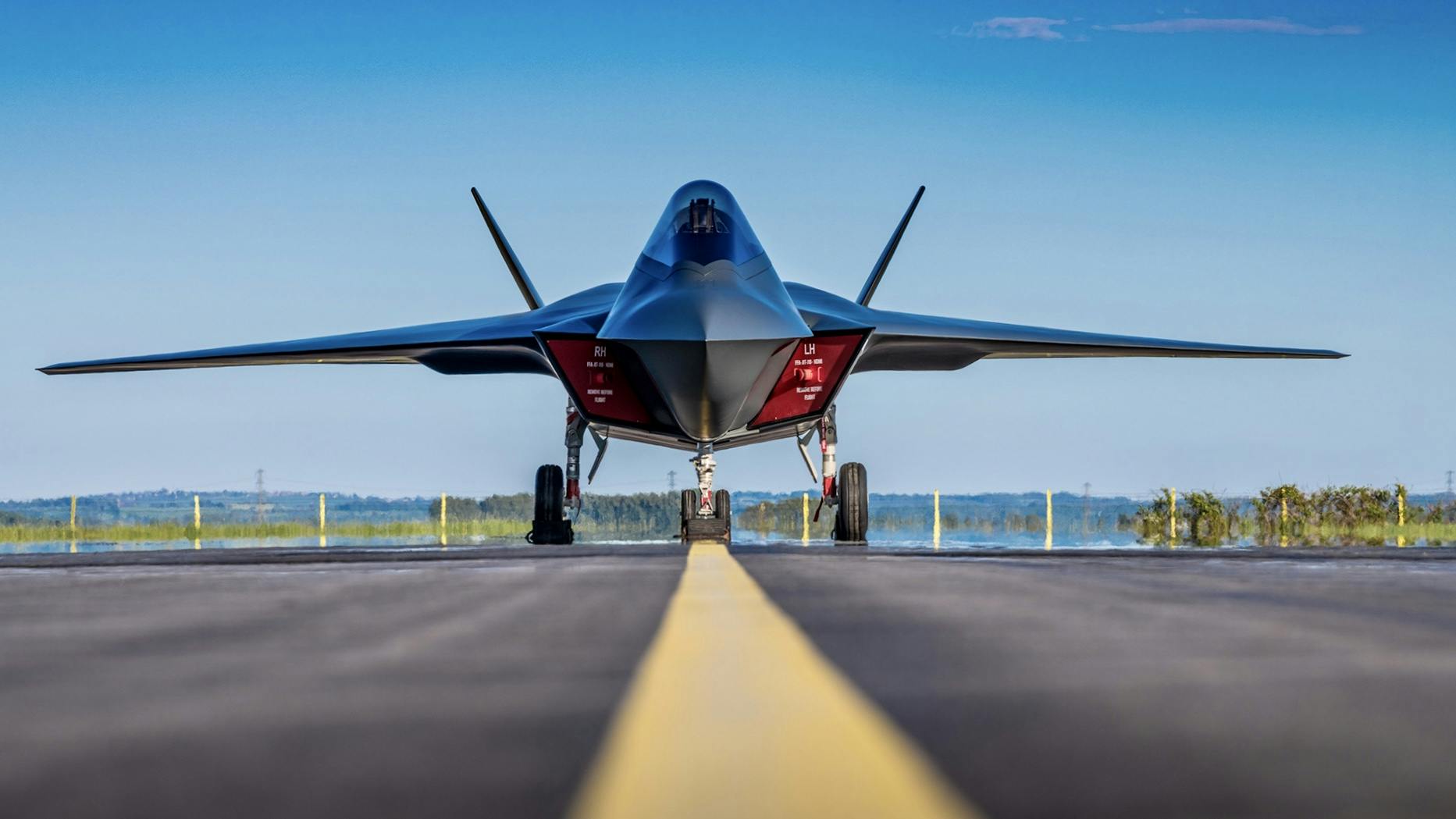
 ukdefencejournal.org.uk
ukdefencejournal.org.uk

Type 26 Frigate to be armed with anti-ship cruise missiles
The 'Future Cruise/Anti-Ship Weapon' will be fitted to Type 26 Frigates from 2028.
 ukdefencejournal.org.uk
ukdefencejournal.org.uk
- Joined
- 9 October 2009
- Messages
- 21,969
- Reaction score
- 13,616
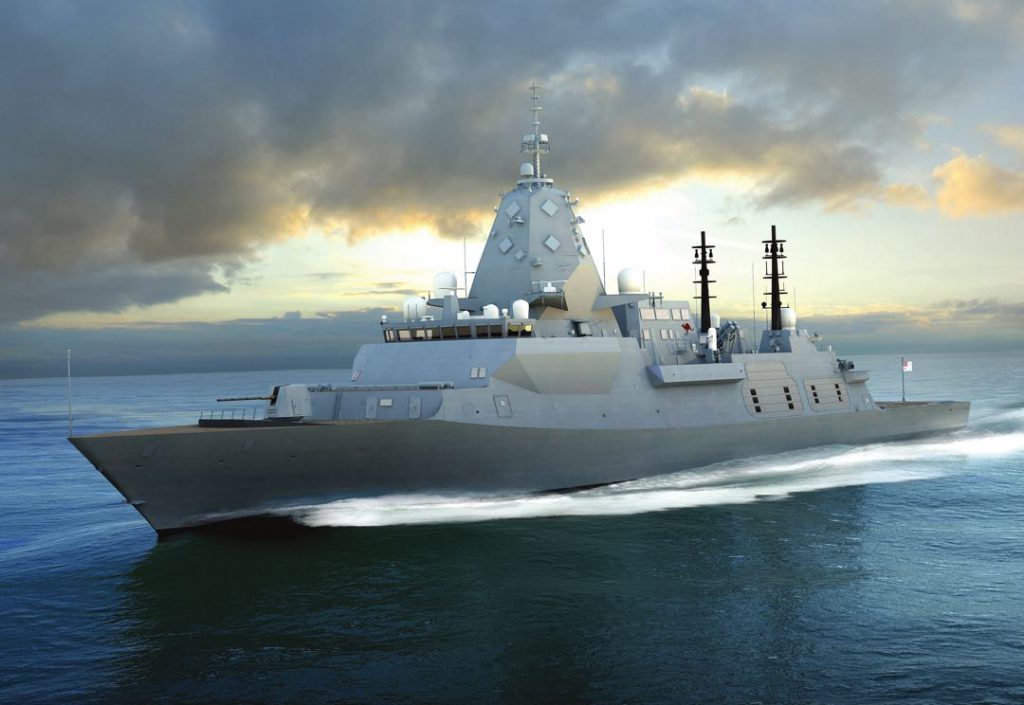
BAE Systems preps for upcoming launch of 1st Type 26 frigate
BAE Systems has revealed that the firm is preparing for the launch of the first Type 26 frigate being built for the Royal Navy.
- Joined
- 9 October 2009
- Messages
- 21,969
- Reaction score
- 13,616
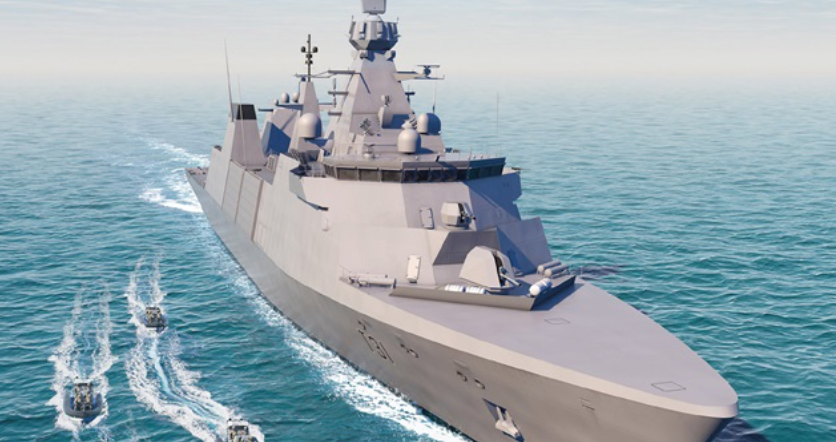
Britain spent billions on new frigates in the last five years
The UK has spent billions of pounds on the Royal Navy's new Type 26 and Type 31 frigates, data provided by Alec Shelbrooke, Minister of State at the Ministry of Defence, show.www.navaltoday.com
aonestudio
I really should change my personal text
- Joined
- 11 March 2018
- Messages
- 2,964
- Reaction score
- 7,493
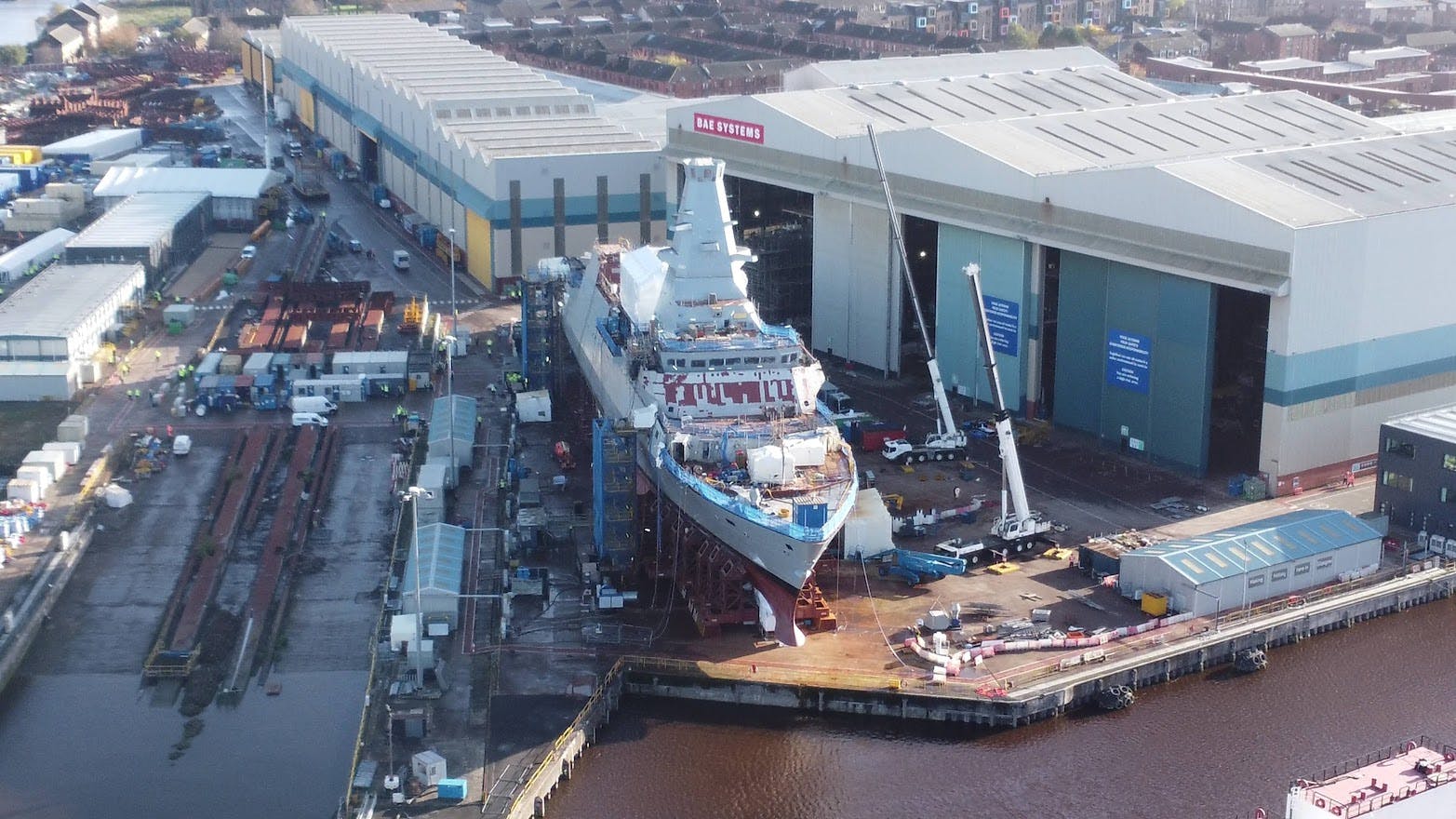
Order placed for remaining five Type 26 Frigates on Clyde
Five more Type 26 Frigates have been ordered by the UK Government, bringing the total number of Type 26 Frigates being built on the Clyde up to eight and the total number of frigates being built in Scotland up to 13.
 ukdefencejournal.org.uk
ukdefencejournal.org.uk

Order placed for remaining five Type 26 Frigates on Clyde
Five more Type 26 Frigates have been ordered by the UK Government, bringing the total number of Type 26 Frigates being built on the Clyde up to eight and the total number of frigates being built in Scotland up to 13.ukdefencejournal.org.uk
And the SNP will still complain.....or claim there is no building go on.
- Joined
- 9 October 2009
- Messages
- 21,969
- Reaction score
- 13,616
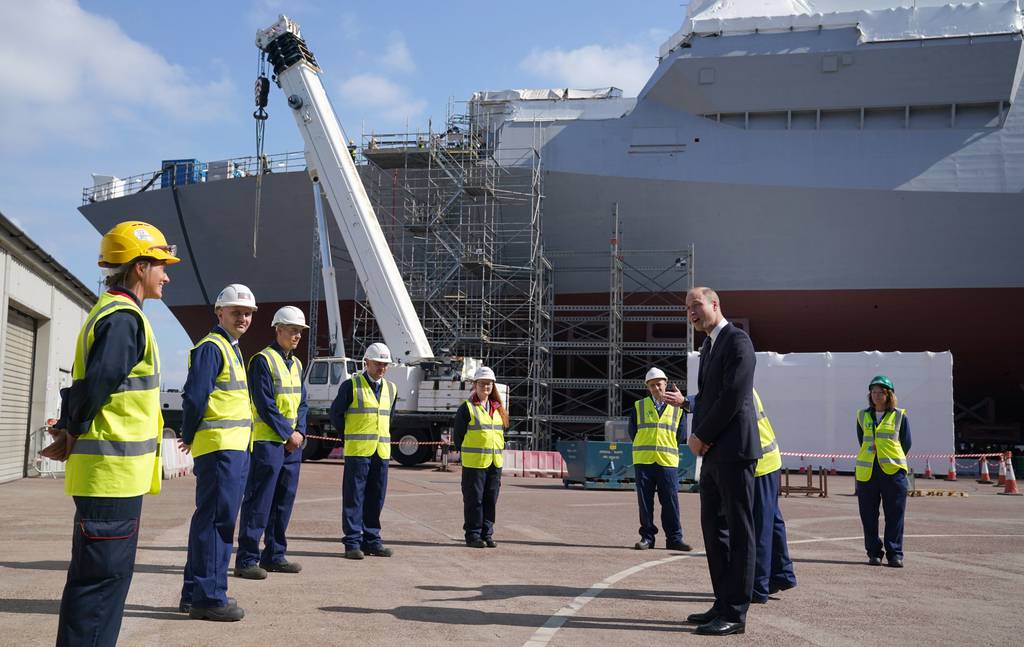
UK orders five more counter-submarine frigates for $5 billion
The new contract fulfills a longtime government commitment to field a fleet of eight Type-26 anti-submarine warships.
- Joined
- 9 October 2009
- Messages
- 21,969
- Reaction score
- 13,616
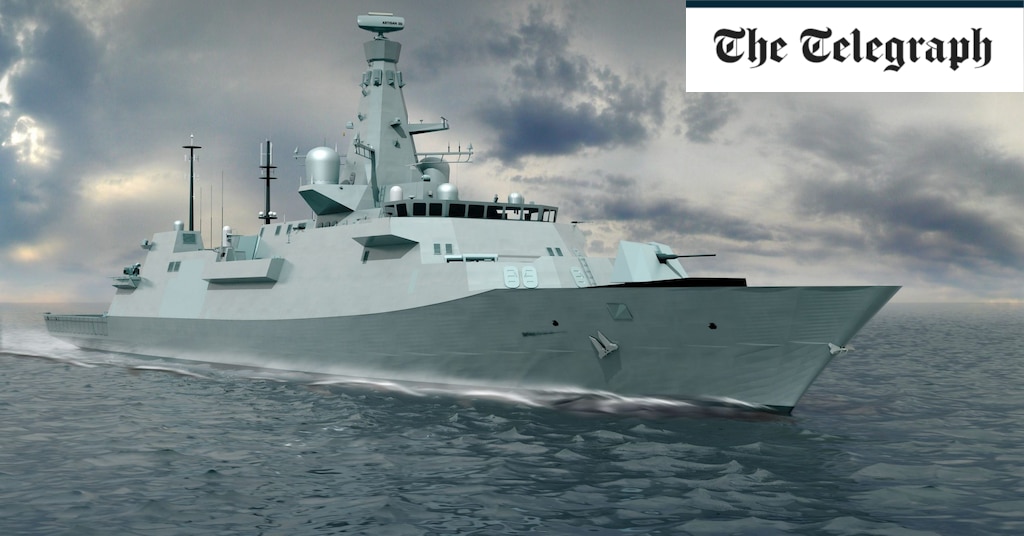
How the Royal Navy’s new warships ended up delayed and over budget – again
The latest delays to the submarine hunters have added £233m to the bill for taxpayers
aonestudio
I really should change my personal text
- Joined
- 11 March 2018
- Messages
- 2,964
- Reaction score
- 7,493
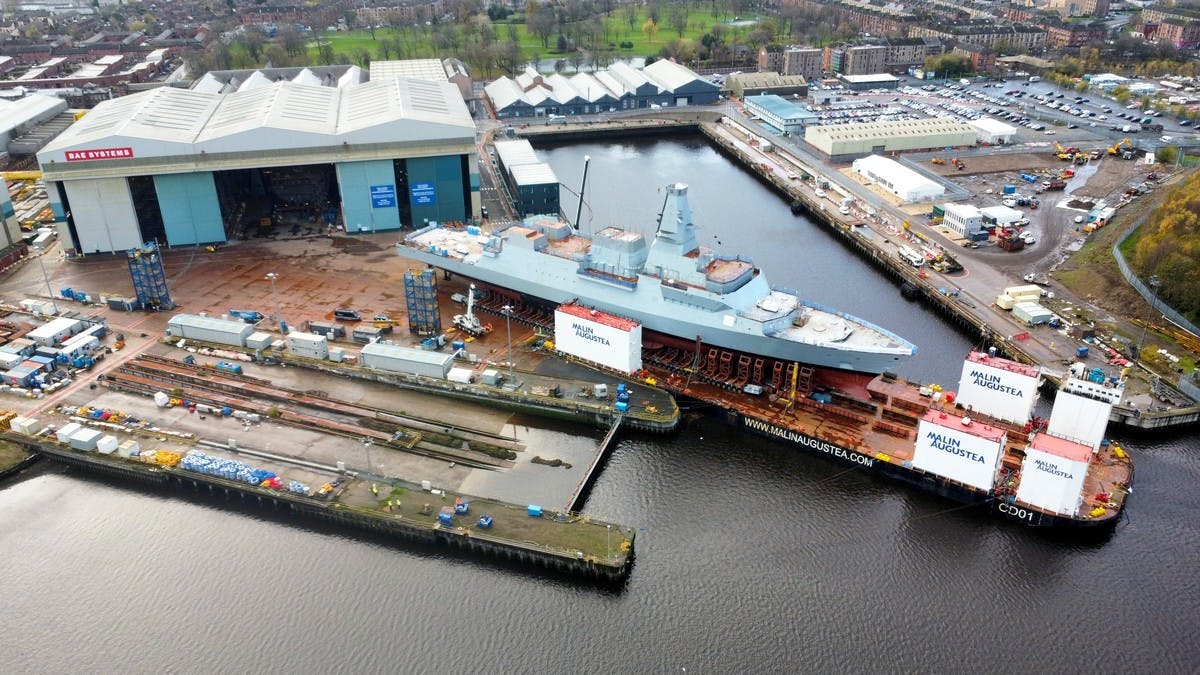
Frigate moved onto barge in Glasgow ahead of ‘launch’
Photos show HMS Glasgow, the first of eight Type 26 Frigates, being moved from land onto a submersible barge before being floated off downriver.
 ukdefencejournal.org.uk
ukdefencejournal.org.uk
View: https://twitter.com/DougieCoullPics/status/1596152234181414912
View: https://twitter.com/Gabriel64869839/status/1596153170589536256
Last edited:
- Joined
- 4 July 2010
- Messages
- 2,514
- Reaction score
- 3,091
I've always been fascinated by the decision not to fill in their current slipway or a couple of the older ones to use as a level assembly/transfer area, and press forward with a plan of "nah we're just going to cram it into the staged area in front of our assembly halls." Leading to them having to swing the stern of the frigate into said hall in order to align with their floating drydock.
Hope they size the new assembly hall and transfer area adequately to avoid such awkwardness in the future.
Hope they size the new assembly hall and transfer area adequately to avoid such awkwardness in the future.
aonestudio
I really should change my personal text
- Joined
- 11 March 2018
- Messages
- 2,964
- Reaction score
- 7,493
- Joined
- 9 October 2009
- Messages
- 21,969
- Reaction score
- 13,616
Via TankNet:
View: https://twitter.com/NavyLookout/status/1597968732663472131?ref_src=twsrc%5Etfw%7Ctwcamp%5Etweetembed%7Ctwterm%5E1597968732663472131%7Ctwgr%5E22e1bb262bbecc20ca3effb2c32710da40113ec3%7Ctwcon%5Es1_&ref_url=https%3A%2F%2Fwww.tanknet.org%2Findex.php%3Fapp%3Dcoremodule%3Dsystemcontroller%3Dembedurl%3Dhttps%3A%2F%2Ftwitter.com%2FNavyLookout%2Fstatus%2F1597968732663472131
View: https://twitter.com/NavyLookout/status/1597968732663472131?ref_src=twsrc%5Etfw%7Ctwcamp%5Etweetembed%7Ctwterm%5E1597968732663472131%7Ctwgr%5E22e1bb262bbecc20ca3effb2c32710da40113ec3%7Ctwcon%5Es1_&ref_url=https%3A%2F%2Fwww.tanknet.org%2Findex.php%3Fapp%3Dcoremodule%3Dsystemcontroller%3Dembedurl%3Dhttps%3A%2F%2Ftwitter.com%2FNavyLookout%2Fstatus%2F1597968732663472131
- Joined
- 9 October 2009
- Messages
- 21,969
- Reaction score
- 13,616
aonestudio
I really should change my personal text
- Joined
- 11 March 2018
- Messages
- 2,964
- Reaction score
- 7,493
aonestudio
I really should change my personal text
- Joined
- 11 March 2018
- Messages
- 2,964
- Reaction score
- 7,493
Ron5
I really should change my personal text
- Joined
- 19 January 2016
- Messages
- 95
- Reaction score
- 100
Let's water drain away instead of accumulating and causing corrosion. They'll be plated when the SS becomes watertight.Wondering why they haven't completely plated over the bridge wings.
Forest Green
ACCESS: Above Top Secret
- Joined
- 11 June 2019
- Messages
- 9,508
- Reaction score
- 17,402
A Tentative Fleet Plan
I really should change my personal text
- Joined
- 9 April 2018
- Messages
- 1,212
- Reaction score
- 2,833
Didn't know that the Type 26s were going to come with composite armour.
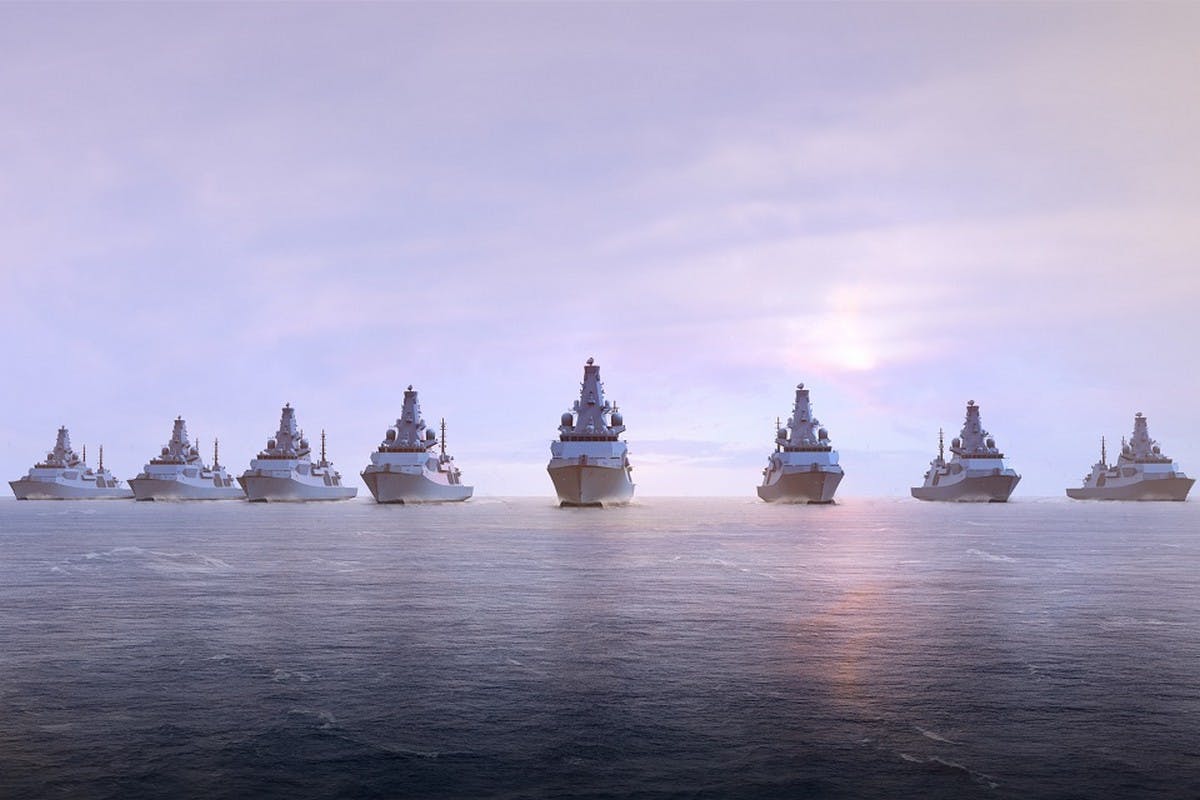
 ukdefencejournal.org.uk
ukdefencejournal.org.uk

Israeli firm picked to provide armour for Type 26 Frigates
Israeli firm Plasan has signed a contract with BAE Systems to provide armour (in key sections) for the second batch of five Type 26 Frigates being built in Glasgow for the Royal Navy.
 ukdefencejournal.org.uk
ukdefencejournal.org.uk
BlackBat242
OK, I changed my personal text ;)
- Joined
- 10 April 2013
- Messages
- 1,474
- Reaction score
- 4,281
CVF has it, Type 45s have it... USN CVNs have had Kevlar armor installed in bulkheads for at least 30 years... and so on.Didn't know that the Type 26s were going to come with composite armour.

Israeli firm picked to provide armour for Type 26 Frigates
Israeli firm Plasan has signed a contract with BAE Systems to provide armour (in key sections) for the second batch of five Type 26 Frigates being built in Glasgow for the Royal Navy.ukdefencejournal.org.uk
aonestudio
I really should change my personal text
- Joined
- 11 March 2018
- Messages
- 2,964
- Reaction score
- 7,493
Scott Kenny
ACCESS: USAP
- Joined
- 15 May 2023
- Messages
- 11,628
- Reaction score
- 14,304
In the specific case of the Japanese, they don't build anything bigger than a "destroyer" due to Article 9 of their constitution. A destroyer is a defensive escort ship.I guess the definition of frigate has gone the way of destroyer. 500 feet long and 8,000 tons full displacement seems like a big overlap with current destroyers while DDG 1000 is poaching hard into cruiser size. Maybe we can blame the Japanese with their 800 foot long helicopter destoyers. It is more than annoying to see political word games drive the programmatic funding process because sometimes this can bleed over into actual design considerations. And then there are all those ships named after politicians. I wonder if there are any congressional types with the fortitude to introduce legislation to ban any further naming of ships after politicians?
Ironically, the USN was building nuclear powered Destroyer Leaders and Destroyer Escorts before they got renamed to Cruisers in 1975. Because the USSR had a bunch of Cruisers and the US had very few.
- Joined
- 16 April 2008
- Messages
- 9,605
- Reaction score
- 14,493
"Frigate" especially is a historically tricky word. The use of the term "frigate" to refer to small escort ships is actually a novel usage from roughly WW2. In the age of sail through the mid-1800s, frigates were one step below ships of the line (aka Line of battle ships, aka battleships). Early US frigates were especially powerful, not too far off the weakest SoLs.
And just to confuse matters, "cruiser" was not a specific type of ship before about 1870. Before then, frigates, corvettes, and sloops-of-war were classed as "cruisers" because they cruised independently rather than sailing as part of a battlefleet.
And just to confuse matters, "cruiser" was not a specific type of ship before about 1870. Before then, frigates, corvettes, and sloops-of-war were classed as "cruisers" because they cruised independently rather than sailing as part of a battlefleet.
Scott Kenny
ACCESS: USAP
- Joined
- 15 May 2023
- Messages
- 11,628
- Reaction score
- 14,304
As usual, the most dangerous threat to HM military is HM Treasury...It was the Treasury that nixxed the "frigate factory" plan and insisted on minimum investment in infrastructure. Not Bae.
Scott Kenny
ACCESS: USAP
- Joined
- 15 May 2023
- Messages
- 11,628
- Reaction score
- 14,304
The American 44s are the one time the Battlecruiser concept of "fast enough to outrun anything that could kill them, and gunned enough to kill anything that they can catch" seems to have worked as written."Frigate" especially is a historically tricky word. The use of the term "frigate" to refer to small escort ships is actually a novel usage from roughly WW2. In the age of sail through the mid-1800s, frigates were one step below ships of the line (aka Line of battle ships, aka battleships). Early US frigates were especially powerful, not too far off the weakest SoLs.
The American 44s are arguably closer to 64 gun ships of the line than to the British 36-38 gun frigates, between bigger guns (minimum of 24pdr cannons on the American ships), heavier planking (live oak and white oak make for a very solid ship, even before you get into the fact that the frames were 16" wide and 16" on center so there was no space between frames, or the extra diagonal stringers added) and excellent lines (the Constitution could make 12-14 knots running downwind).
yup.And just to confuse matters, "cruiser" was not a specific type of ship before about 1870. Before then, frigates, corvettes, and sloops-of-war were classed as "cruisers" because they cruised independently rather than sailing as part of a battlefleet.
Scott Kenny
ACCESS: USAP
- Joined
- 15 May 2023
- Messages
- 11,628
- Reaction score
- 14,304
No, they do not.And yet, we have the F-35. Evidently massive problems can be overcome when there is a common objective and the will to see it through. The US and UK work "very" closely on the submarine front as well.
No shared plans aside from the Trident missile compartment, which was basically done because the UK bought Polaris and then Trident missiles. The entire missile compartment is part of the Trident missile system. IIRC, the US got the pumpjet propulsor design in return.
No shared ship designs.
Completely different habitability standards (the US abhors hot-bunking, while the RN hot racks as a normal thing on their SSNs!)
I was under the impression that the RN has switched to one man one bunk in the Astute class?No, they do not.And yet, we have the F-35. Evidently massive problems can be overcome when there is a common objective and the will to see it through. The US and UK work "very" closely on the submarine front as well.
No shared plans aside from the Trident missile compartment, which was basically done because the UK bought Polaris and then Trident missiles. The entire missile compartment is part of the Trident missile system. IIRC, the US got the pumpjet propulsor design in return.
No shared ship designs.
Completely different habitability standards (the US abhors hot-bunking, while the RN hot racks as a normal thing on their SSNs!)
Scott Kenny
ACCESS: USAP
- Joined
- 15 May 2023
- Messages
- 11,628
- Reaction score
- 14,304
They may have, but it took them 50 years to realize that hot racking leads to lower crew morale and performance...I was under the impression that the RN has switched to one man one bunk in the Astute class?No, they do not.And yet, we have the F-35. Evidently massive problems can be overcome when there is a common objective and the will to see it through. The US and UK work "very" closely on the submarine front as well.
No shared plans aside from the Trident missile compartment, which was basically done because the UK bought Polaris and then Trident missiles. The entire missile compartment is part of the Trident missile system. IIRC, the US got the pumpjet propulsor design in return.
No shared ship designs.
Completely different habitability standards (the US abhors hot-bunking, while the RN hot racks as a normal thing on their SSNs!)
Forest Green
ACCESS: Above Top Secret
- Joined
- 11 June 2019
- Messages
- 9,508
- Reaction score
- 17,402
View: https://twitter.com/UKDefJournal/status/1703453663597875573?s=20

 ukdefencejournal.org.uk
ukdefencejournal.org.uk

Composite mast installed on new frigate HMS Cardiff
The composite mast for the second Type 26 Frigate, HMS Cardiff, has been installed.
 ukdefencejournal.org.uk
ukdefencejournal.org.uk
- Joined
- 23 August 2011
- Messages
- 1,610
- Reaction score
- 4,771
RN crew habitability standards are in a different league from the USN. T45, QE Class and T26 are luxury cruise ships in comparison to USN vessels....and the RFA are like luxury yachts in comparison. But in SSN and SSBN its more similar. Vanguard Class onwards habitability in RN Subs is basically the same as USN. USN only really got a brief advantage for a few years with the Ohios and Los Angeles Class.They may have, but it took them 50 years to realize that hot racking leads to lower crew morale and performance...
Scott Kenny
ACCESS: USAP
- Joined
- 15 May 2023
- Messages
- 11,628
- Reaction score
- 14,304
Hot racking was standard up until the Astutes in UKRN fast attacks. Hot racking in the USN is to be avoided at all costs, and never happened on my Tridents even when we had inspection teams onboard taking up extra bunk space.RN crew habitability standards are in a different league from the USN. T45, QE Class and T26 are luxury cruise ships in comparison to USN vessels....and the RFA are like luxury yachts in comparison. But in SSN and SSBN its more similar. Vanguard Class onwards habitability in RN Subs is basically the same as USN. USN only really got a brief advantage for a few years with the Ohios and Los Angeles Class.
- Joined
- 6 September 2006
- Messages
- 4,833
- Reaction score
- 9,452
Improved firepower options and potential impacts on Type 83.
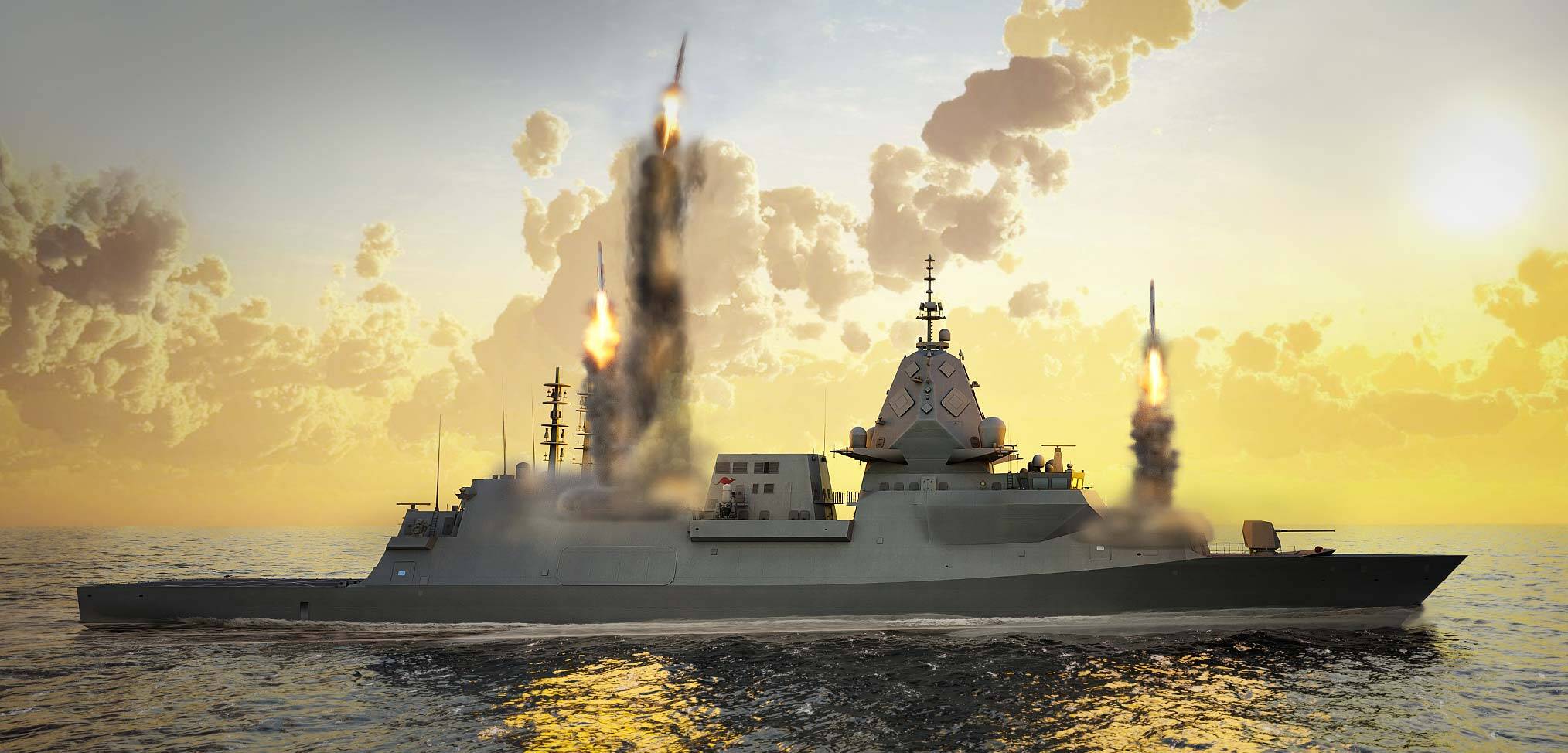
 www.navylookout.com
www.navylookout.com

Adding firepower to the Type 26 Frigate | Navy Lookout
Kiltonge
Greetings Earthling
- Joined
- 24 January 2013
- Messages
- 634
- Reaction score
- 1,186
Hot racking was standard up until the Astutes in UKRN fast attacks. Hot racking in the USN is to be avoided at all costs, and never happened on my Tridents even when we had inspection teams onboard taking up extra bunk space.
Must be a bomber thing. Even the LA SSNs had hot racking for junior ranks.
Scott Kenny
ACCESS: USAP
- Joined
- 15 May 2023
- Messages
- 11,628
- Reaction score
- 14,304
Never very voluntarily on the part of the ship. Submariners hate hot racking. (not least because it complicates waking people up for watch)Must be a bomber thing. Even the LA SSNs had hot racking for junior ranks.
- Joined
- 6 September 2006
- Messages
- 4,833
- Reaction score
- 9,452

The Type 26 Frigate – where even the plumbing is quiet
When being shown HMS Cardiff, I was surprised to learn that the attention to limiting noise extends to encompass every part of the ship, including waste plumping.
 ukdefencejournal.org.uk
ukdefencejournal.org.uk
"The order is - engage the silent plughole!"
- Joined
- 15 July 2007
- Messages
- 4,887
- Reaction score
- 4,550
At Sea, on a Type 26......
The Type 26 Frigate – where even the plumbing is quiet
When being shown HMS Cardiff, I was surprised to learn that the attention to limiting noise extends to encompass every part of the ship, including waste plumping.ukdefencejournal.org.uk
"The order is - engage the silent plughole!"
no one hears you flush
Forest Green
ACCESS: Above Top Secret
- Joined
- 11 June 2019
- Messages
- 9,508
- Reaction score
- 17,402
Silent but deadly.
- Joined
- 9 October 2009
- Messages
- 21,969
- Reaction score
- 13,616
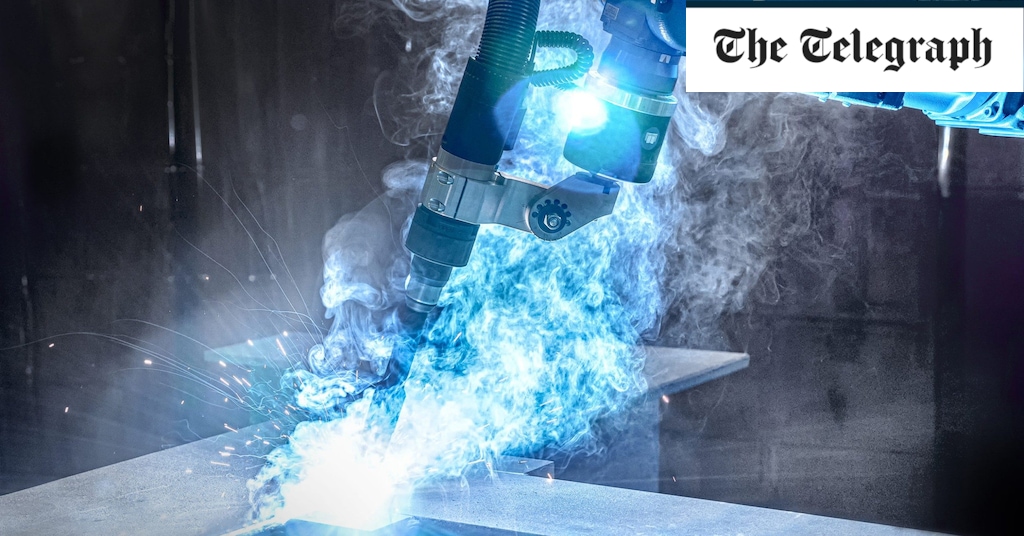
Robot welders deployed in race to build submarine-hunting frigates on time
BAE Systems turns to machines as labour shortage threatens to delay delivery of Type 26s
Rhinocrates
ACCESS: Top Secret
- Joined
- 26 September 2006
- Messages
- 3,053
- Reaction score
- 7,780
One could imagine adjustments to the menu to reduce noise.Silent but deadly.
